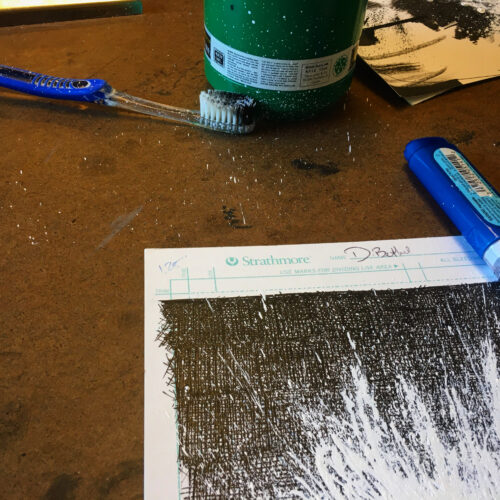Chapter 3 really got me to push my art, and I tried to continue to bring new challenges and techniques into my art in Chapter 4.
Especially with the prominence of rain and other effects, the biggest hero of Chapter 4 has to be a tool called a correction pen.

The correction pens I regularly use. Top: Pentel Presto! Jumbo Correction Pen. Below: Uni-Ball Signo
I had, at previous points, bought white paint or ink to try and use in addition to the standard black ink, but I rarely found it effective, or my need for it was so rare that the bottles I bought went bad or became sludge. But I had seen videos of artists using correction pens to great effect that I felt the need to try one more time and the results were immediate.
Obviously––as the name implies––they are handy for cleaning up errant lines or whiting out spaces to redraw a bad decision. However, since they’re not using normal ink––it’s thicker and quicker to dry; it may very well be the same stuff as found in bottles of white out––it is actually more versatile in ways.
A good example is on this page. To create the chaotic energy of Long John’s actions in the first panel, I really leaned into the more esoteric uses of this wonderful tool.

With the help of a toothbrush and, actually, an expired driver’s license, I was able to build up a convincing splatter effect using, well, splatter of corrective fluid.
In person, these effects may be less than impressive––I put a dollop of correction fluid on the corner of an expired driver’s license and flicked it over the page––when scanned the pieces come together to create a very impressive tone, making the extensive mess I made on my drawing table all the more worth it.
I am surprised to say that, especially with this chapter, I added a new permanent tool to my tool set, one which I make sure to include in my pencil box for travel and has become part of my artistic lexicon when composing an image, even if the final image conveys horrific, over the top, unforgivable violence.




Discussion ¬